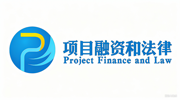Expert-Speak: Blended Finance – Bridging The Gap In Emerging Markets In Support Of The SDGs

Amid the widespread global support for the United Nations’ Sustainable Development Goals (SDGs), there was an underlying concern among economists and financial advisors in the emerging and frontier markets: public sector and donor funds were stalled, if not regressing, and the funding gap to realize the SDGs was increasing. The challenge was to incentivize and mobilize private capital, reduce risk-return profiles, and avoid conflicts of interest such as institutions providing commercial financing and managing concessional resources.
In 2002, the European Bank for Reconstruction and Development provided project finance subsidies to multinational funders. Seven years later, a $30 million Clean Technology Fund Renewable Financing Facility was used to finance a 250MW wind project in Mexico. These were early steps in using a mix of public and private capital to support clean energy projects in developing countries.
Today, the term ‘blended finance’ is much more common, as multilateral institutions and donors invest more official development assistance (ODA) in this way.
Using development finance and philanthropic funds to drive private capital flows to emerging and developing markets is an accepted catalyst that helps to bridge the financing gap and contribute to the SDGs.
Blended finance is being used successfully in sectors including renewable energy infrastructure, urban transport, and agriculture. The Global Environment Facility —an independent financial organization established in 1991 comprising representatives from 32 constituencies — is a prime example, using blended finance to scale up financing for renewable energy technologies in developing countries.

South Africa’s Renewable Energy Independent Power Producer Procurement Programme (REIPPPP) exemplifies how blended finance can help renewable projects. The government provided initial support and guarantees to mitigate risks for private investors and international financiers; development finance institutions offered concessional loans and guarantees to cover political/credit risks in this emerging market; and a robust regulatory framework with power purchase agreements ensured predictable investment returns. By blending public de-risking instruments with private capital, the program successfully unlocked renewable energy investment by addressing investor concerns upfront through an enabling policy environment.
Managing the risk
Blended finance clearly depends on public sector support to encourage private investment in emerging markets. However, legal frameworks, stability, and transparency must be addressed; clear laws and policies are essential, while ensuring clarity and accountability in complex financing arrangements. Governments and international institutions are crucial in facilitating this environment.
Blended finance fund recipients acknowledge that, while beneficial in attracting private investment for public projects, there are potential risks. In the worst case scenario, misalignment between the financial objectives of private investors and the social or environmental goals of public or philanthropic funders may lead to reputational damage if investments result in unintended negative social or environmental impacts. Therefore, it is essential to customize ODA by considering the appropriate use of blending in emerging markets.
Solving for the opportunity
Mitigating the risks requires a robust financial ecosystem that fosters public-private dialogue and partnerships, enhanced due diligence, and the involvement of local communities Multilateral development banks and international financial institutions can create the right climate for investment, encouraging participation by pooling capital from public, private and philanthropic sources to spread risk. They can also offer risk-sharing instruments such as guarantees or insurance products to protect against political, credit and currency risks, thereby mitigating potential losses and making projects more attractive to investors.
Banks and financial institutions on the ground, with longstanding market expertise, can help promote consensus among stakeholders to establish principles for structuring and allocating blended finance, which can prove valuable.
The private sector can provide technical assistance to strengthen project preparation, build the capacity of local partners, and ensure that projects are developed with sound governance practices and business plans.
Conclusion
Developing countries are still far short of the financing required to achieve SDG Agenda 2030. Leveraging private finance is only part of the solution – getting the finance to where it is most needed is what matters. Blended finance can, and should, play a crucial role in achieving global development goals facilitating large-scale capital mobilization and ensuring that such mobilizations are carried out responsibly and sustainably, ultimately contributing to a more equitable and sustainable global economy.






